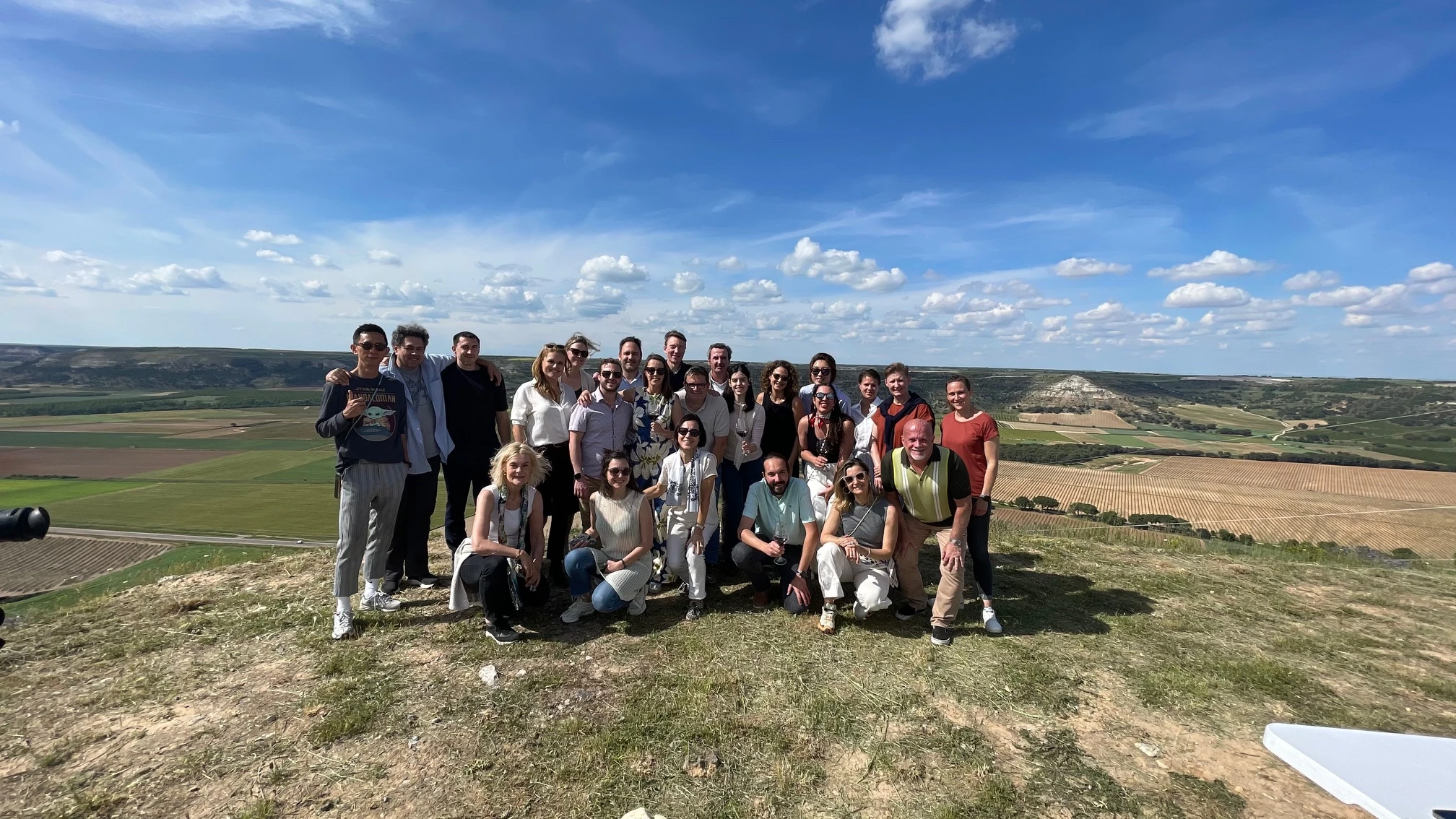One year ago, we rediscovered in this very blog the extraordinary diversity of Ribera del Duero. Back then, we spoke of its plurality of styles, geographic richness, and the evolution of a region with a deep historical legacy—capable of moving at full speed without losing its essence.
By that point, we had already spent a year developing the Ribera del Duero Wine Educator Programme, commissioned by the region’s Regulatory Council. It took us another year to finalize the book and design a program that would do justice to a wine region as surprising and nuanced as Ribera—far more so than most mortals imagine. You’ve seen us with enthusiasm and notebooks in hand. Because this time, we weren’t just visiting—we were an active part of the very first Ribera del Duero Wine Educator Program: an immersive and educational journey designed for seasoned educators from across the globe. Together, we lived the exhilarating reality of this region from within.
The goal? To train communicators and educators capable of interpreting and conveying the identity of Ribera with depth, accuracy, and emotion.
From the very first welcome toast at Hotel Torremilanos, hosted by Ricardo Peñalba with a lineup of claretes, vintages, and reservas that already hinted at the level of the program, to the final lunch in a subterranean winery in Atauta, graciously welcomed by the village’s octogenarian mayor—everything was enlightening. Every moment spent among vineyards, wineries, lectures, and tastings offered us a high-definition view of the region.
From Roa, the institutional heart of the appellation, we kicked off with a welcome session led by three key figures from the Consejo Regulador: Pablo Baquera (Marketing Director), Alberto Tobes (Director of Viticulture and Winemaking), and Alejandro González (Technical Director). Alongside them, of course, were our “special envoys,” Elisa Errea and Nygil Murrell, who charted the roadmap for this rigorous yet inspiring course.
From the very first tasting, it was clear: there is top-tier material here. And from that point forward, the program became a journey through expert voices and unique landscapes.
Álvaro Izquierdo, winemaker and Technical Director at Dominio de Cair, spoke of varietal origin, minimal intervention, and experiments with Bobal and Monastrell—grapes originally hidden among the Tinto Fino vines—opening new doors for Ribera’s discourse.
Jesús Sastre, from his Pago de Santa Cruz vineyard, delivered a masterclass in terroir, character, and clarity of vision, showing how a single plot can yield multiple expressions depending on vintage and vineyard management.
At Condado de Haza, the second generation of the Fernández Rivera family—Lucía Pascual and Rodrigo Pons—welcomed us with warmth and transparency, sharing the evolution of a project that adapts without losing its soul.
And then came the grand finale: a masterful session by Almudena Alberca MW titled A Winemaker’s Guide to Tinto Fino.
At Los Perejiles in Tubilla del Lago, our beloved and admired Manuel del Rincón (Bodegas Marta Maté) explained the reality of working with old vines—its many lights (and just as many shadows, with low yields and the constant need to be “on call”).
Then, Noelia Callejo (Félix Callejo), Cristina Alonso and Fernando Ortiz (Territorio Luthier), and Pilar Zapatero (El Lagar de Isilla) guided us through a vibrant tasting of claretes and rosés at La Casona de La Vid, followed by a traditional lunch with roast lamb—of course!
That evening, an unforgettable dinner at La Pícara Gastroteca was preceded by a white wine tasting led by Nygil Murrell. Wines from Dominio de Pidio, Valtravieso, Territorio Luthier, and Arzuaga revealed the lesser-known—yet highly promising—side of the region, with Albillo Mayor taking center stage.
By Day Three, we had become fast friends. It was a true ode to excellence. At Vega Sicilia, Gonzalo Iturriaga led a private visit and tasting of the wines from one of the region’s flagship estates.
Lunch took place at Ambivium, the Michelin-starred restaurant, where Fernando Moret designed a pitch-perfect pairing menu featuring wines from Milsetentayseis and Pago de Carraovejas.
In the afternoon, Jorge Peique (winemaker at Conde de San Cristóbal) brought us to the windswept heights of Páramo de La Arenosa, where we discussed climate change adaptation as the breeze whipped around us.
The final day took us east, where Jaime Suárez (Dominio de Atauta) and Bertrand Sourdais (Dominio de ES) guided us through vineyards, underground stone presses, and deeply emotional tastings featuring wines from Antídoto, Dominio de Atauta, Dominio de ES, and Valdegatiles.
It wasn’t just about tasting—we were listening to their stories, sharing their vision, and understanding their purpose. All of which added meaning to the wines and helped us grasp the broader history of Ribera del Duero.
This course, in short, was a declaration of intent. Ribera del Duero isn’t content with making great wines—it wants to tell true stories. And to do so, it invests in those with the mission to speak about wine with discernment and heart.
At The Wine Studio, we’re proud to have contributed to the design and execution of this pioneering project. We return with full hearts, aching jaws from laughter, and inspiration switched fully ON.
Because yes—we’ve learned a lot.
But more importantly, we’ve felt it:
Ribera del Duero is alive and kicking.
The Wine Studio Team
